Emma Nishimura: An Archive of Rememory
Desai | Matta Gallery
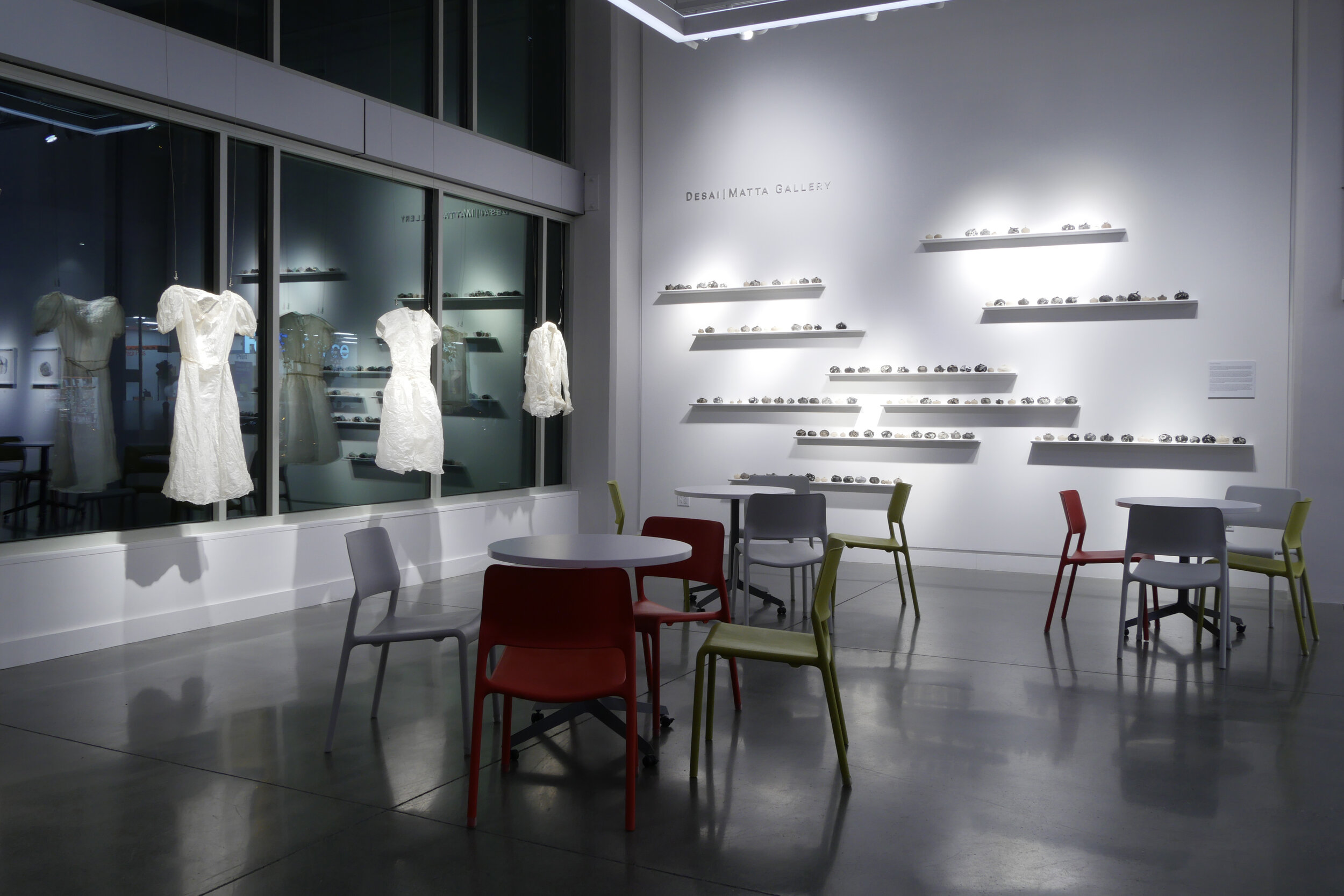
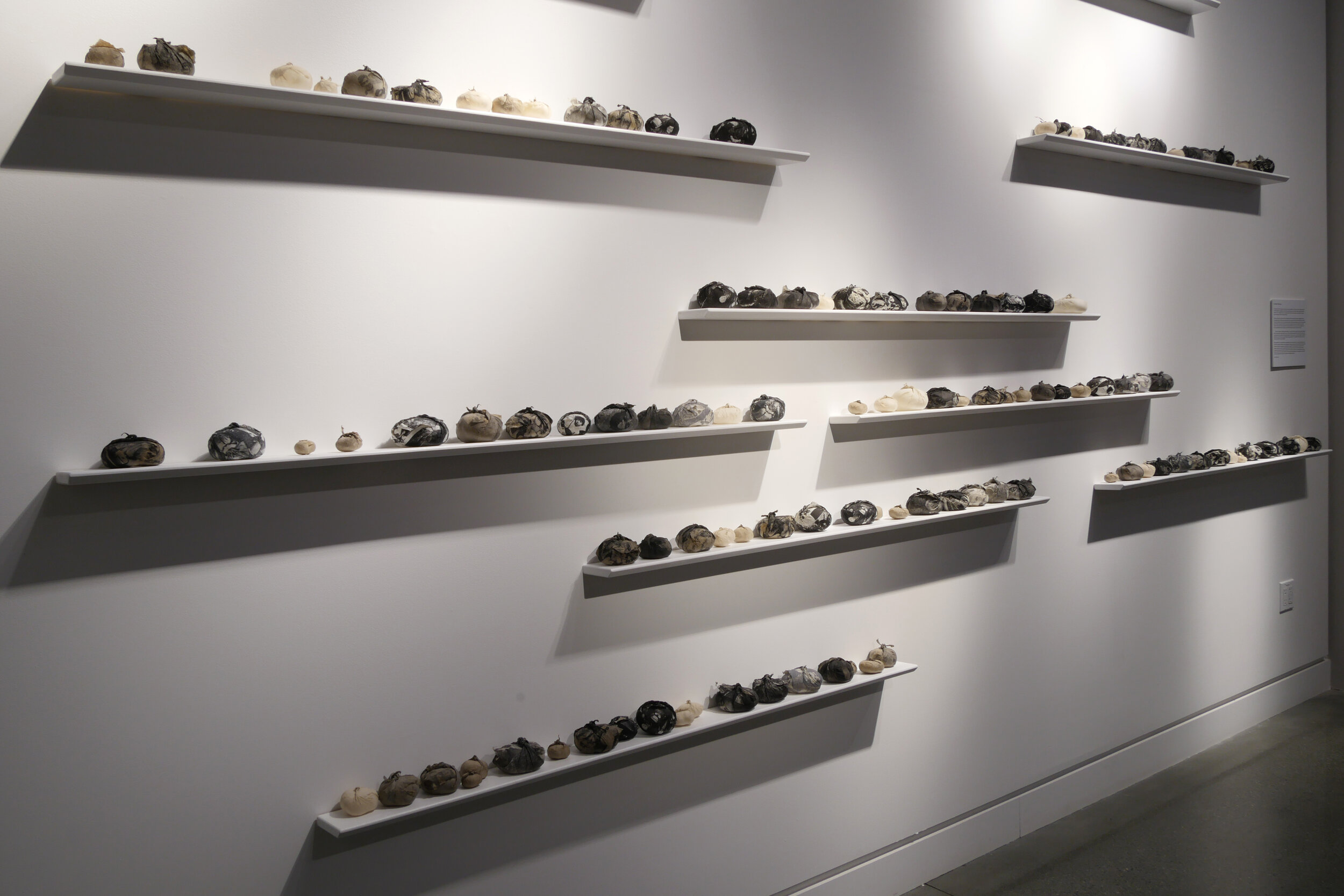
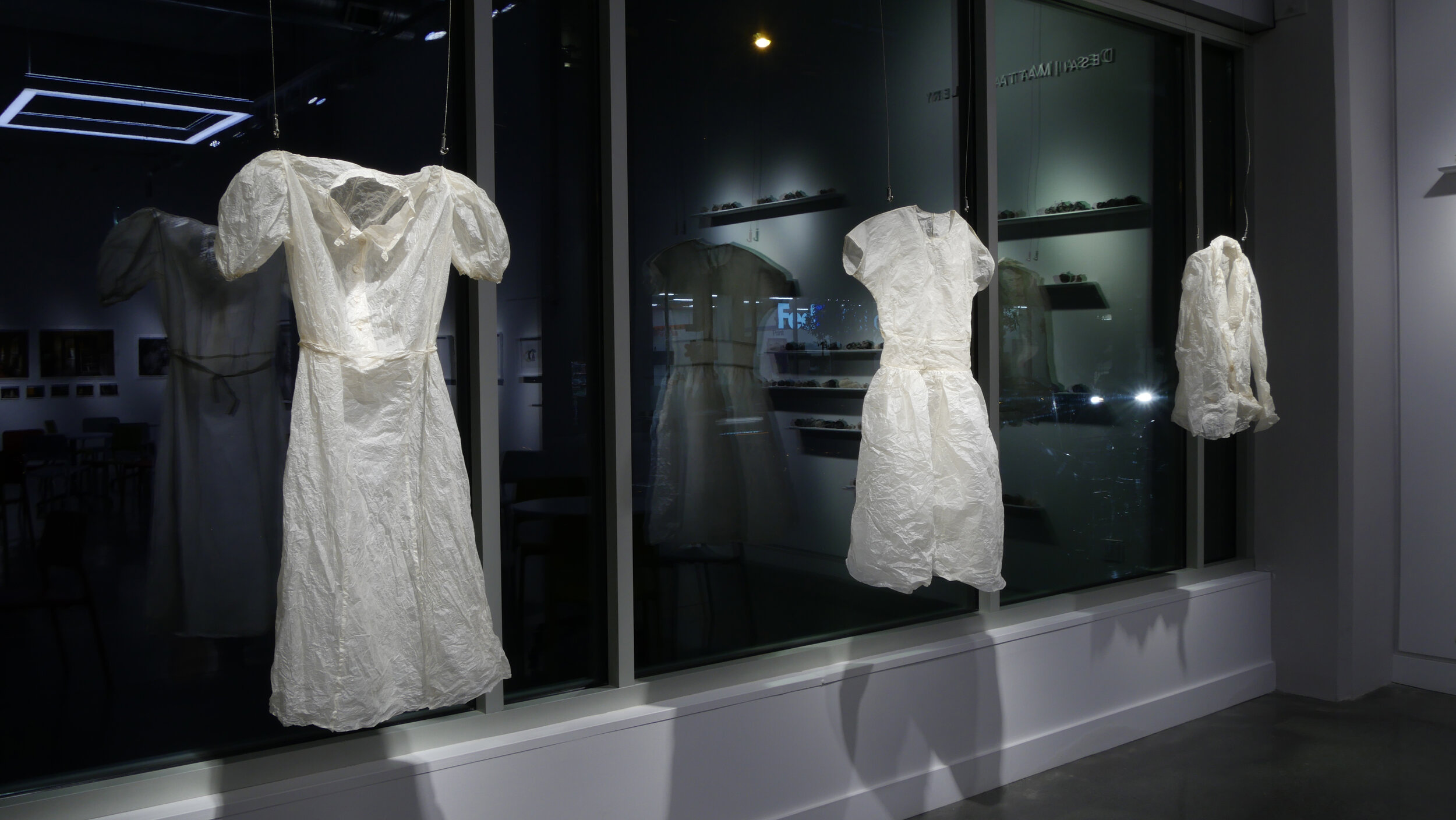
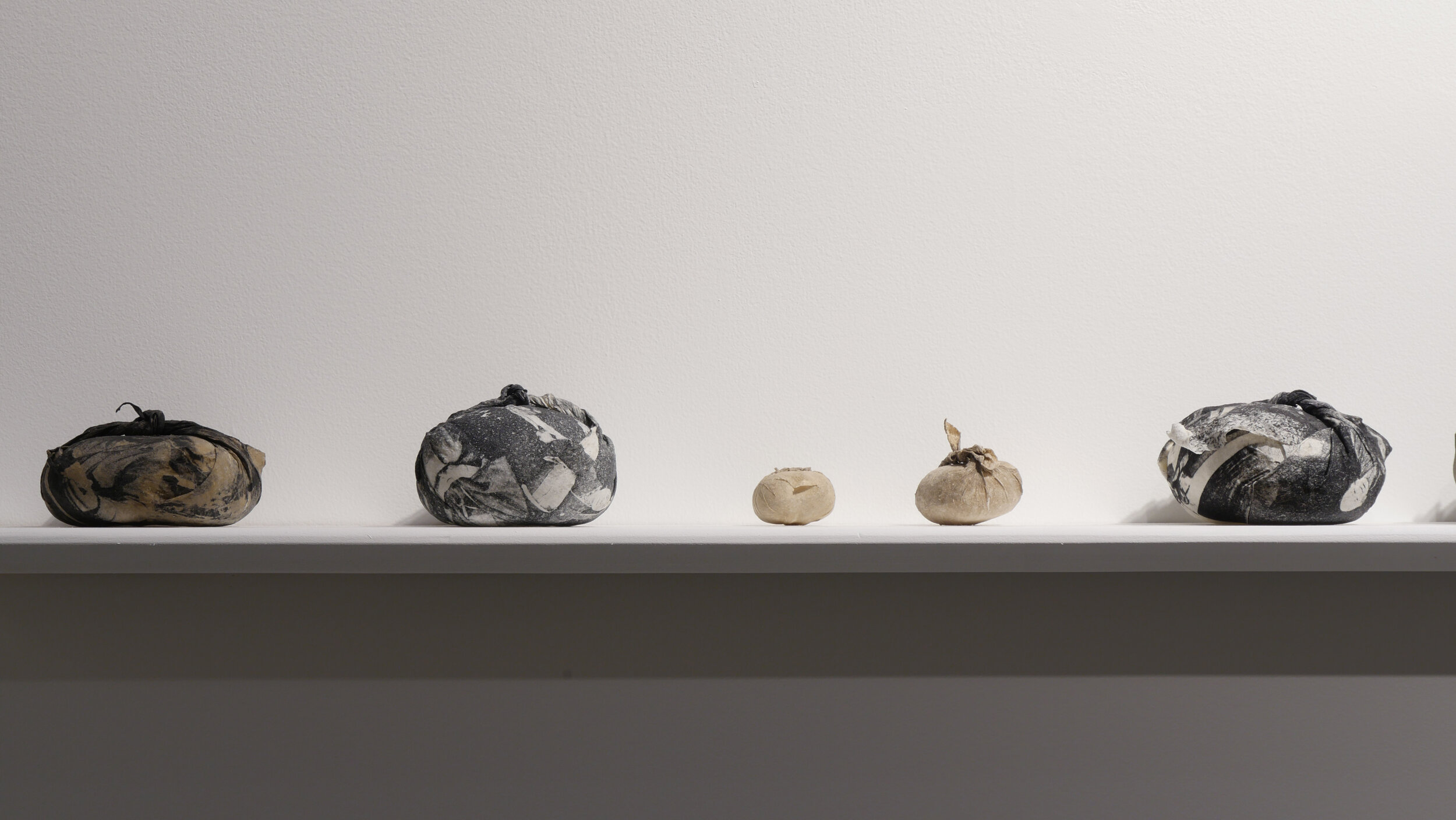
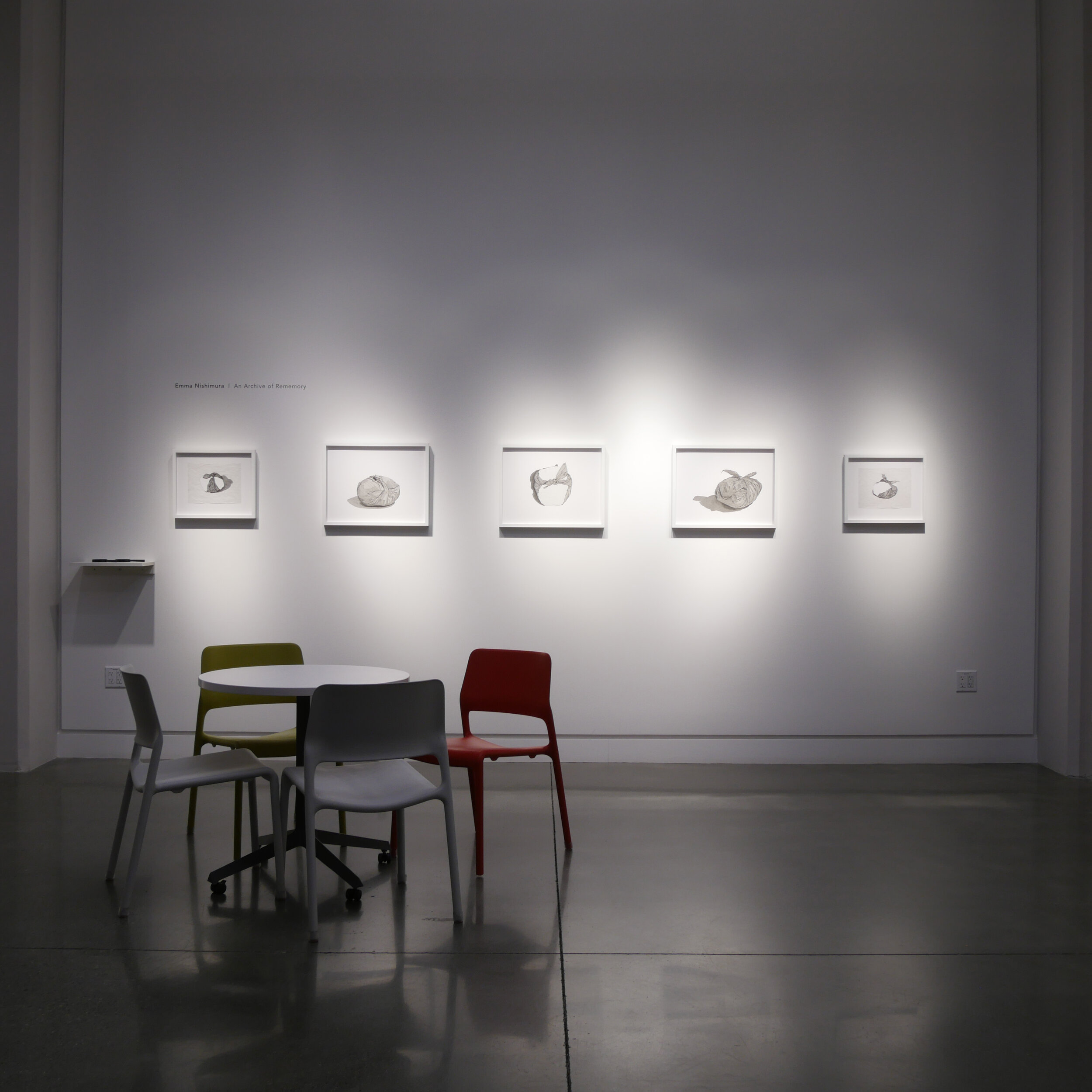
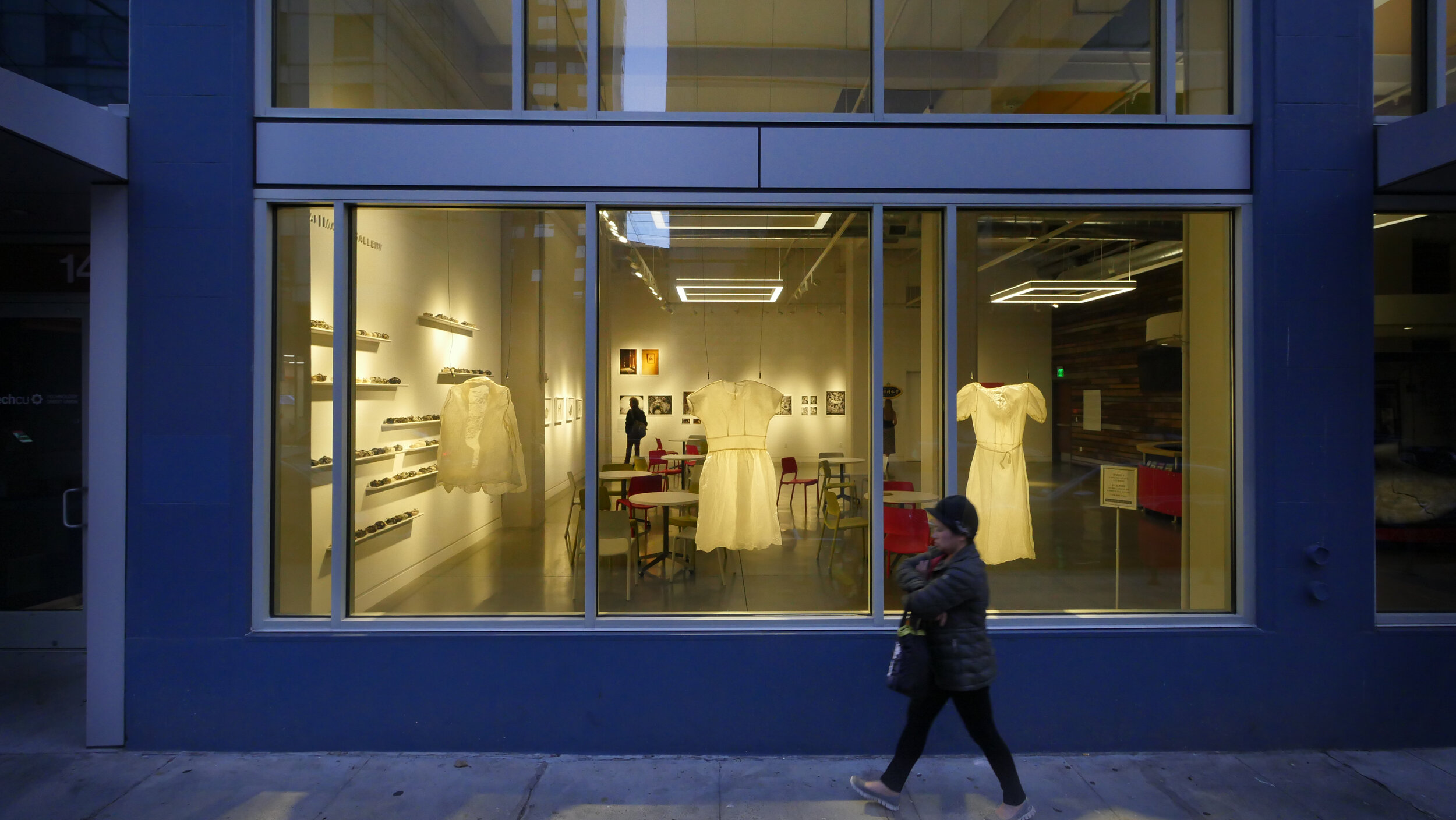
Artist Statement, Emma Nishimura (from emmanishimura.com)
Thinking about the weight of memory and the stories that are passed down from one generation to the next (and the stories that are lost as well), this body of work explores the idea of what it might look like to package and archive memory. An extension of the Collected Stories series, this work is part of an ongoing installation project that focuses on the narratives surrounding the Japanese Canadian internment.
The series consists of hundreds of small bundled forms, known as furoshiki. This Japanese wrapping technique can be used to both store and protect. It may wrap a gift or be purely utilitarian. Working with photo-intaglio and sculptural papermaking processes, the bundles appear to contain an assortment of objects and have varying illusions of physical weight. However, all of the bundles are empty - mere shells that bear only the traces of what they once held. Many of the forms reveal elements of photographic imagery, small moments that link and connect with different stories and memories. All of the photographs have been archived from family albums, my own, as well as others. I will continue to make more bundles, as I complete further interviews and collect photographs from different storytellers.
Neil Chowdhury: A House Divided: Still Lives of 46 Lahiri Lane
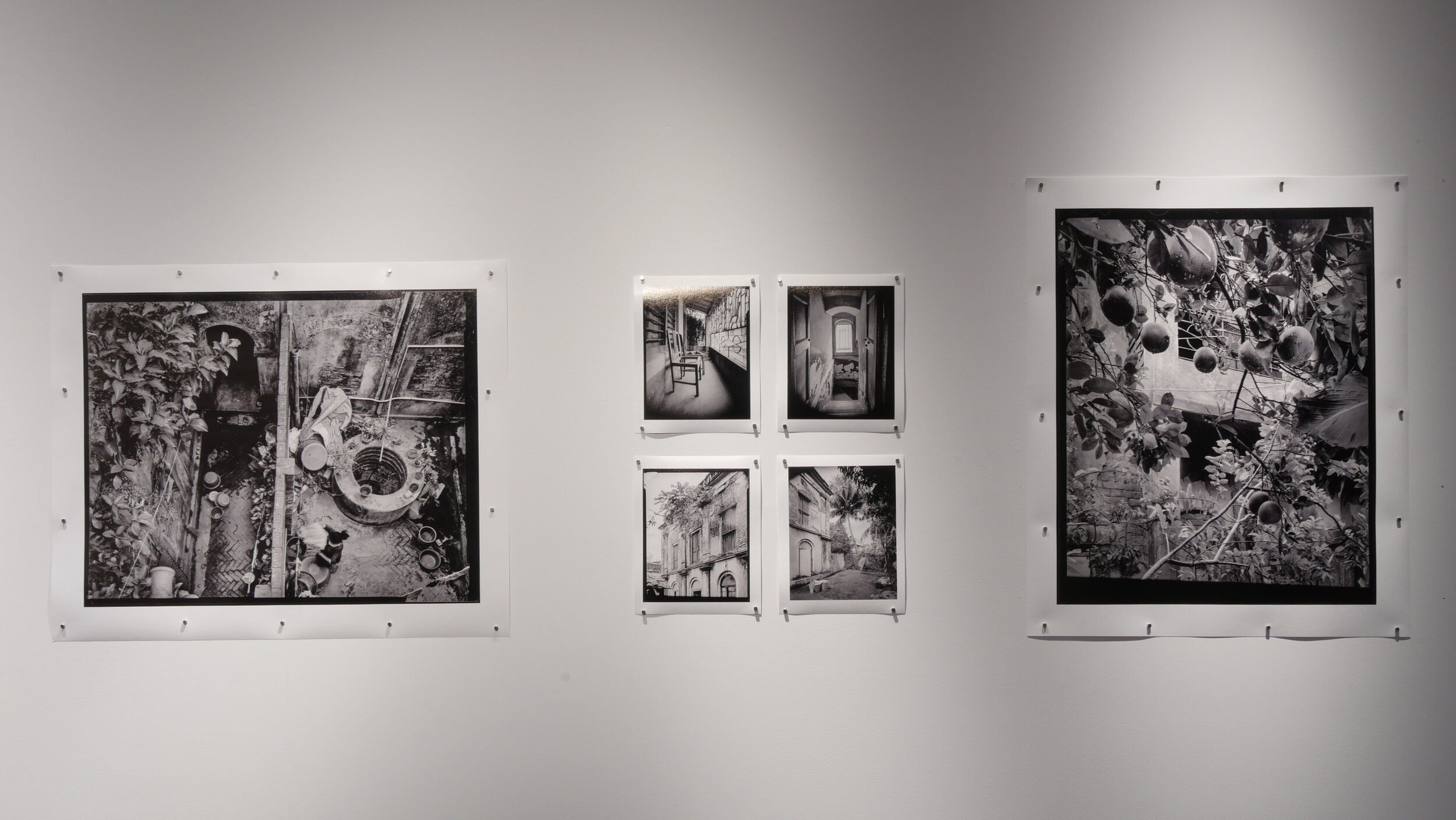
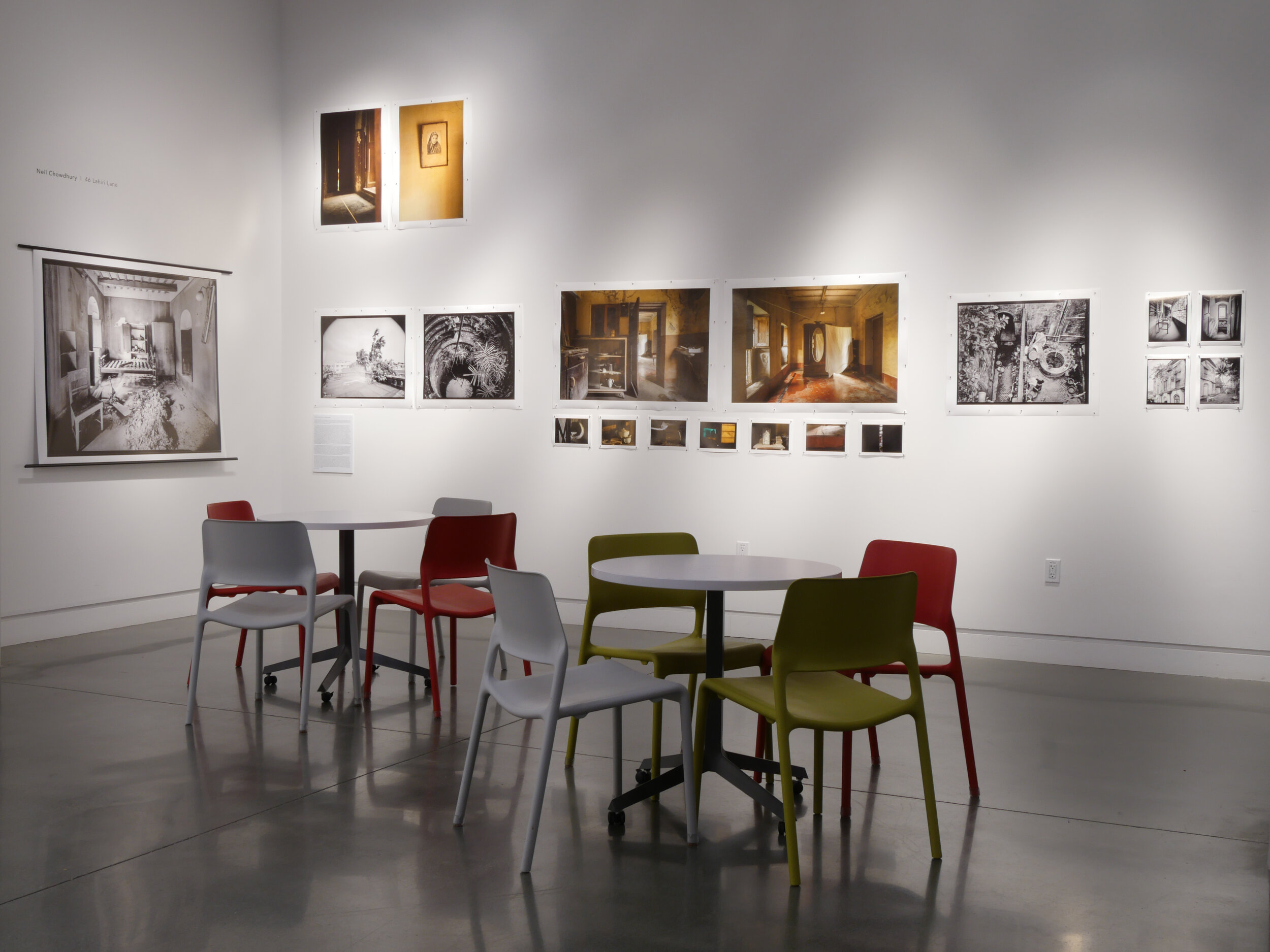
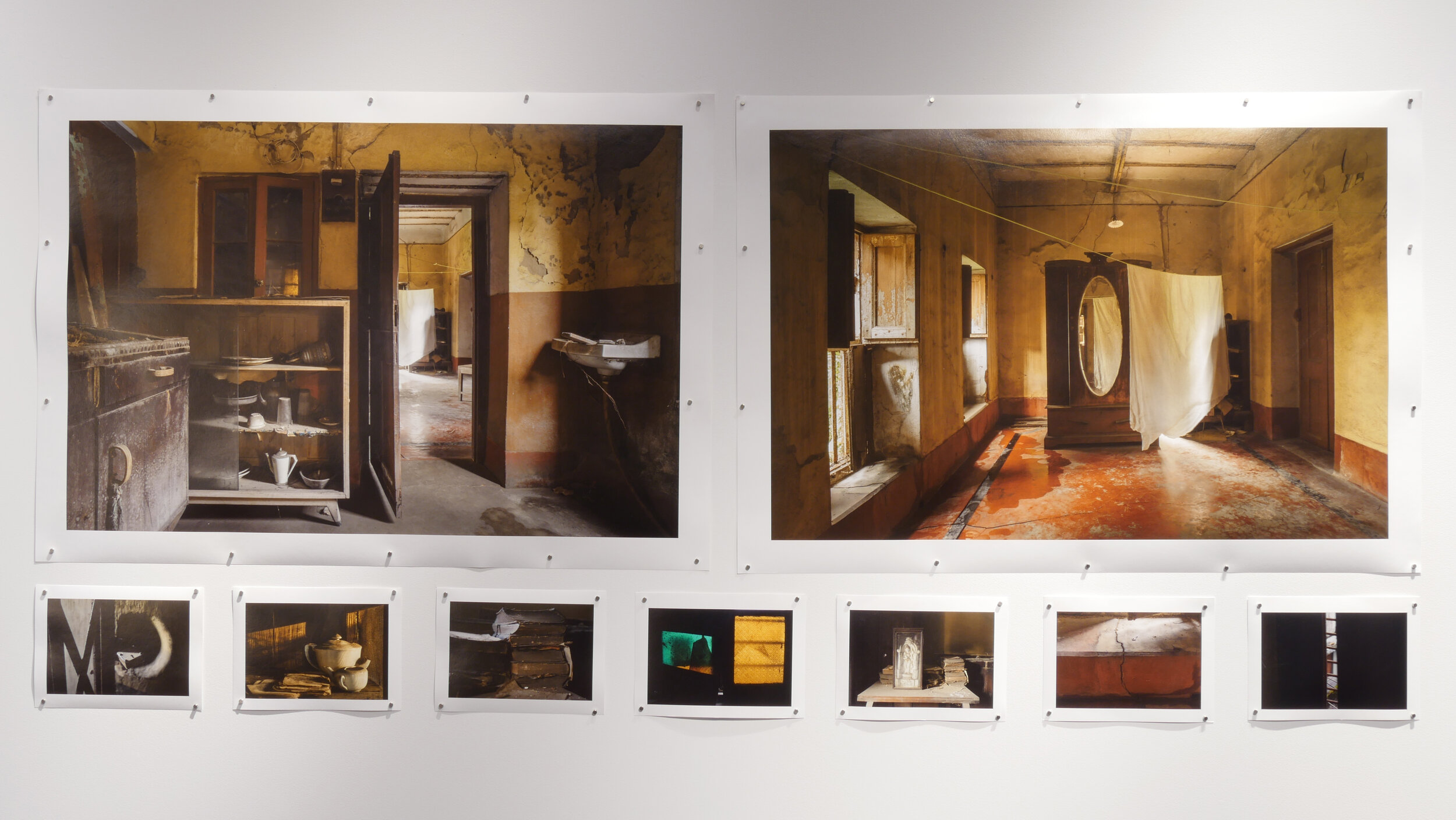
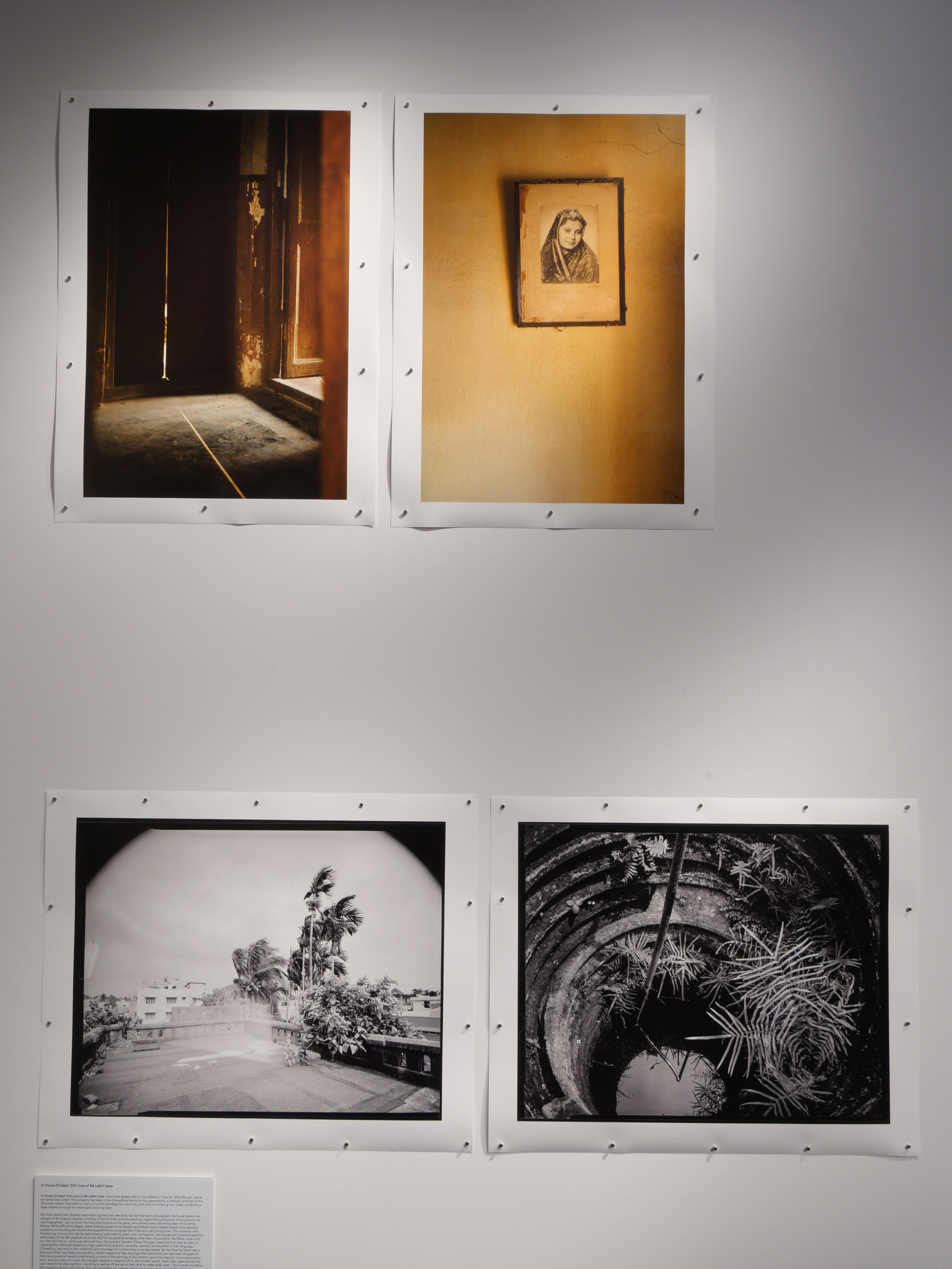
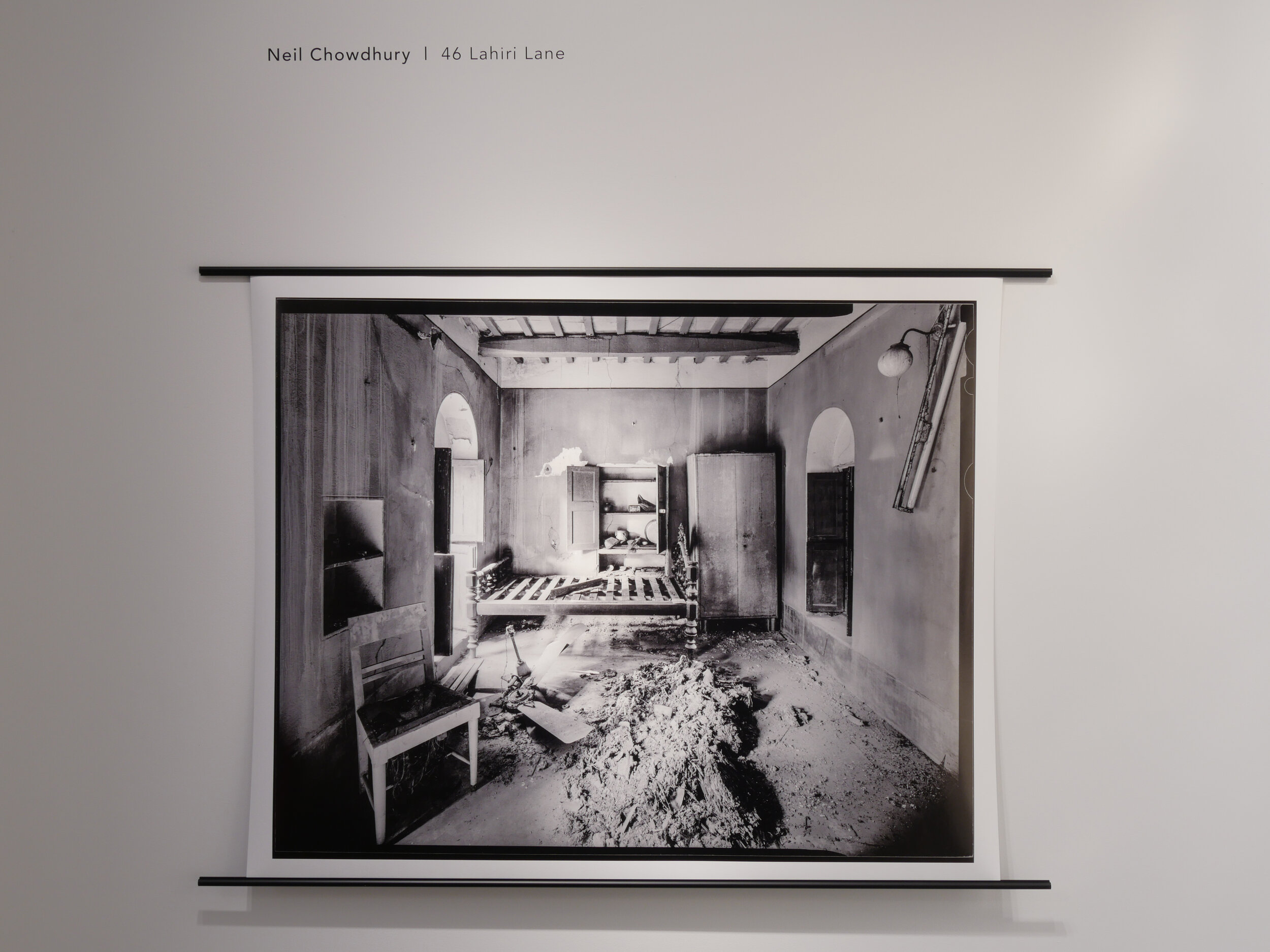
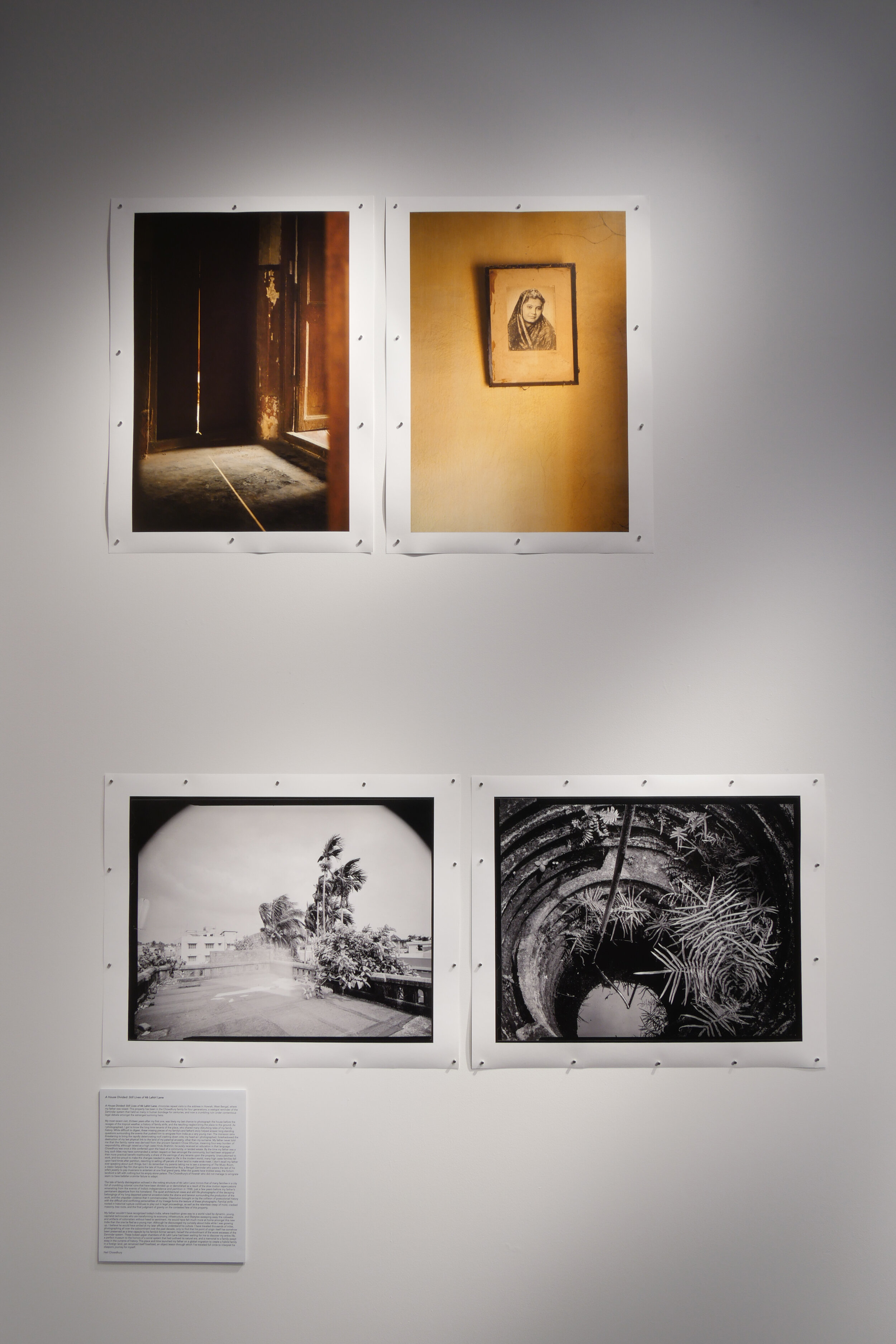
How do we listen to the past to understand the present? Searching for ancestral stories we might reach towards something that never becomes quite clear, a place where the exigencies of memory refuse a recognizable truth. In this pair of solo exhibitions, Emma Nishimura and Neil Chowdury listen closely for whispers that illuminate their family stories, and in the process point to larger narratives of colonization, migration, and adaptation through the diasporic experience.
Emma Nishimura's work is striking for its beauty, simplicity and calm, contrasted against a devastating reality: Canada also interned the Japanese. The stories are shrouded in secrecy, or perhaps better left unspoken, lest they gain power through their telling. Nishimura collects, transcribes, and creates, packaging memory into the folds of the furoshiki, a wrapping meant to carry or to protect.
For two decades Neil Chowdhury has been returning to India, searching for a story, anything, to reveal something of the vast silence of the past. With the passing of his father, gone also was the direct connection to his roots. He now visits his ancestral home, seeking connection within its crumbling walls.
Both these artists engage generational memory, tracing their family through layered storytelling. Primarily following their paternal lines, they attempt conversation between the generations that is limited by the nature of time and geographical distance. There is no claim to tell things as they objectively were, but rather a reinterpretation, reaching towards a lineage that extends across borders, nationhood, and cultural identity.